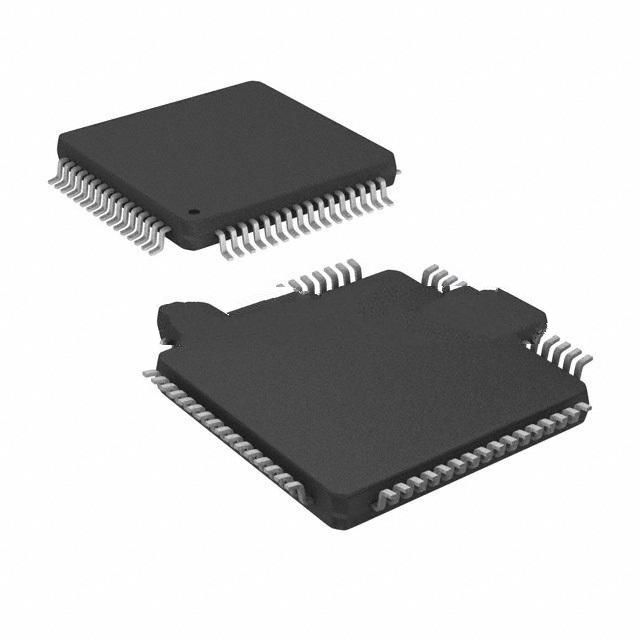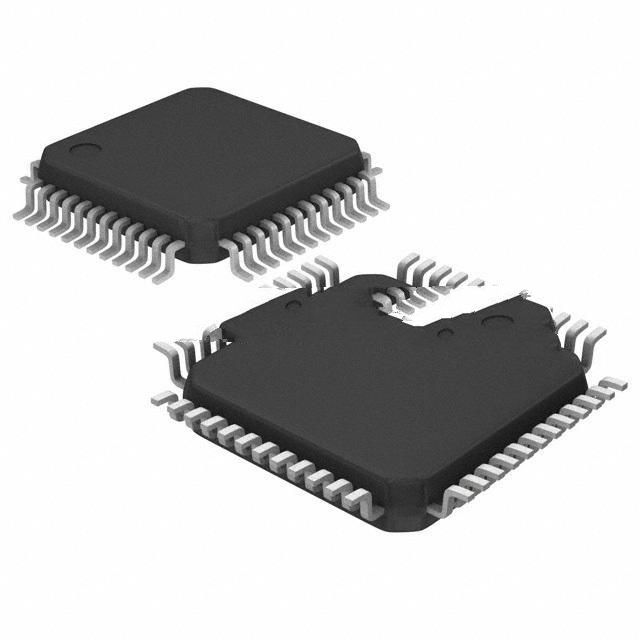LC87F5WC8AVU-QIP-H Product Introduction:
ON Semiconductor Part Number LC87F5WC8AVU-QIP-H(Embedded - Microcontrollers), developed and manufactured by ON Semiconductor, distributed globally by Jinftry. We distribute various electronic components from world-renowned brands and provide one-stop services, making us a trusted global electronic component distributor.
LC87F5WC8AVU-QIP-H is one of the part numbers distributed by Jinftry, and you can learn about its specifications/configurations, package/case, Datasheet, and other information here. Electronic components are affected by supply and demand, and prices fluctuate frequently. If you have a demand, please do not hesitate to send us an RFQ or email us immediately sales@jinftry.com Please inquire about the real-time unit price, Data Code, Lead time, payment terms, and any other information you would like to know. We will do our best to provide you with a quotation and reply as soon as possible.
Introducing the LC87F5WC8AVU-QIP-H, a cutting-edge microcontroller from onsemi that is designed to revolutionize the world of embedded systems. Packed with advanced features and capabilities, this microcontroller is the perfect solution for a wide range of applications.
One of the standout features of the LC87F5WC8AVU-QIP-H is its high-performance 8-bit CPU, which allows for fast and efficient processing of data. This, combined with its generous 64KB of flash memory and 4KB of RAM, ensures that the microcontroller can handle even the most demanding tasks with ease.
In addition to its impressive processing power, the LC87F5WC8AVU-QIP-H also boasts a wide range of peripherals and interfaces. These include UART, SPI, I2C, and USB, making it incredibly versatile and compatible with a variety of devices and systems.
The LC87F5WC8AVU-QIP-H is ideal for a multitude of application fields. It can be used in industrial automation systems, home appliances, automotive electronics, and even consumer electronics. Its robust design and high reliability make it suitable for use in harsh environments, while its low power consumption ensures energy efficiency.
With the LC87F5WC8AVU-QIP-H, onsemi has once again demonstrated its commitment to delivering innovative and high-quality microcontrollers. Whether you are a professional developer or an enthusiast, this microcontroller is sure to exceed your expectations and empower you to create groundbreaking solutions.
Microcontroller is a kind of single chip micro controller, it is an integrated circuit (IC) used to central processing unit (CPU), read-only memory (ROM), random access memory (RAM), input/output (I/O) ports and timer and serial communication interface and other peripheral equipment. The main role of the microcontroller is as a control unit, responsible for receiving input signals, processing data, executing instructions and generating output control signals. Its function in the electronic system is similar to that of the brain, which can respond accordingly to programmed instructions and changes in the external environment.
Application
Microcontroller application field is extremely wide, almost covers all aspects of modern science and technology. In the field of industrial automation, microcontrollers are used for motor control, sensor data acquisition and automation equipment control, significantly improving production efficiency and product quality. In the field of smart home, smart door locks, smart lighting, smart home appliances and other equipment can not be separated from the support of microcontrollers, to achieve remote control and automatic management of equipment. In addition, microcontrollers are also widely used in the Internet of Things, automotive electronics, consumer electronics, medical equipment and other fields, becoming an important force to promote scientific and technological progress.
FAQ about Embedded - Microcontrollers
-
1. What is an embedded system controller?
An embedded system controller is a microcomputer system designed specifically for a specific purpose. It integrates key components such as processors, memory, input and output interfaces, etc. to achieve real-time control and data processing of embedded systems. It is widely used in electronic products, automobiles, industrial automation and other fields, and is an important foundation for modern intelligent production.
Embedded system controllers have the following characteristics:
High performance: Embedded system controllers usually have high-performance processing capabilities and can handle complex computing tasks.
Low power consumption: Compared with personal computers or servers, embedded system controllers usually have lower power consumption and are suitable for long-term operation scenarios.
High reliability: Due to the particularity of the application scenario, the embedded system controller needs to have high reliability and be able to work stably in harsh environments.
Rich peripheral interfaces: In order to adapt to different application requirements, embedded system controllers usually provide rich peripheral interfaces to facilitate communication and data exchange with other devices.
The application fields of embedded system controllers are very wide, including:
Electronic products: such as smart watches, smart home devices, etc.
Automotive electronics: such as in-car entertainment systems, intelligent driving assistance systems, etc.
Industrial automation: such as industrial control systems, automated production lines, etc.
Medical equipment: such as medical imaging equipment, monitoring instruments, etc.
Communication equipment: such as base station equipment, wireless communication terminals, etc.
What is the difference between embedded microcontrollers and external microcontrollers?
The main difference between embedded microcontrollers and external microcontrollers lies in their application scenarios and integration. Embedded microcontrollers are computer systems designed specifically for embedding into object systems. They usually integrate necessary components such as microprocessor cores, memory, and peripheral interfaces, and are mainly used to control and execute specific tasks. External microcontrollers usually refer to independent microcontroller units. Although they also have similar components, they are mainly used for more complex computing and processing tasks.
Embedded microcontrollers are often used in embedded systems, which are usually composed of a series of electronic components and have specific functions. As the core component of the system, embedded microcontrollers are responsible for controlling, monitoring or assisting the operation of equipment, machines and workshops. They are widely used in various fields such as home appliances, automobiles, industrial control, medical equipment, etc., with the characteristics of low power consumption and high performance.
External microcontrollers are usually used in scenarios that require higher computing power and more complex processing. They can exist independently of embedded systems and perform a variety of tasks such as data processing and communication. External microcontrollers are widely used in personal computers, servers, industrial automation and other fields, and can handle more complex data and tasks.
-
2. What is the difference between an embedded MCU and a PLC MCU?
The main difference between an embedded MCU and a PLC MCU is that their application fields, system architectures, and programming methods are different.
Although both embedded MCUs and PLC MCUs involve MCU technology, their application fields are significantly different. Embedded MCUs are mainly used in non-industrial fields such as consumer electronics, automobiles, aerospace, etc. They emphasize high specificity and flexibility and can be customized according to specific needs. PLC MCUs are mainly used in industrial automation control fields, such as electricity, petroleum, chemical industry, machinery manufacturing, etc. The original design intention is to adapt to complex industrial environments and have strong stability and reliability.
In terms of system architecture, embedded MCUs usually have fixed hardware and software configurations, are designed and developed for specific applications, and hardware and software are tightly integrated to form a complete system. PLC MCUs are based on a modular architecture, and different modules can be added to achieve different functions. Both hardware and software are standardized, which is convenient for users to select and configure.
In terms of programming language, embedded MCUs are usually programmed in high-level programming languages such as C and C++. These programming languages have powerful functions and flexibility and can meet complex programming needs. PLC MCUs are mainly programmed in ladder diagram language. This graphical programming method is simple and easy to understand, which is convenient for users to get started quickly. In addition, it also supports some text programming languages, such as instruction lists and structured text.
-
3. What language is used for embedded microcontroller programming?
The main languages used for embedded microcontroller programming include C, C++, assembly language, Python and Rust. These languages have their own characteristics and are suitable for different development needs and scenarios.
C is one of the most commonly used languages in embedded development. It has the advantages of high efficiency, flexibility, and strong portability. It can directly operate hardware and is suitable for low-level driver development, kernel programming, etc. C++ is used in complex embedded systems and adds object-oriented features, which is suitable for the development of large applications. Although assembly language is difficult to learn and write, it is indispensable in scenarios that require high optimization and direct control of hardware. Python is easy to learn and use, and is often used in data processing, prototype development, and rapid testing. Rust is gradually gaining attention in the embedded field due to its memory safety and high performance, especially in applications with high security requirements.
 Lead free / RoHS Compliant
Lead free / RoHS Compliant





























